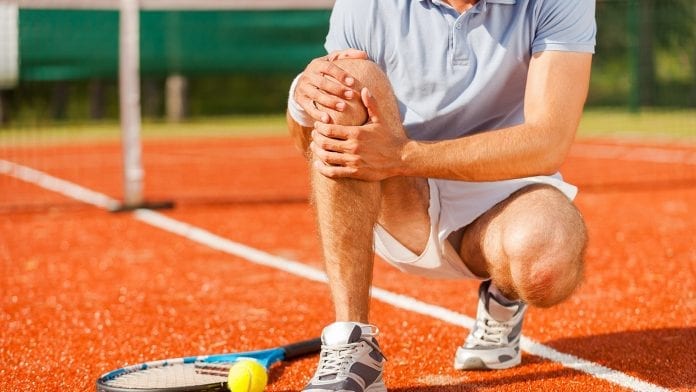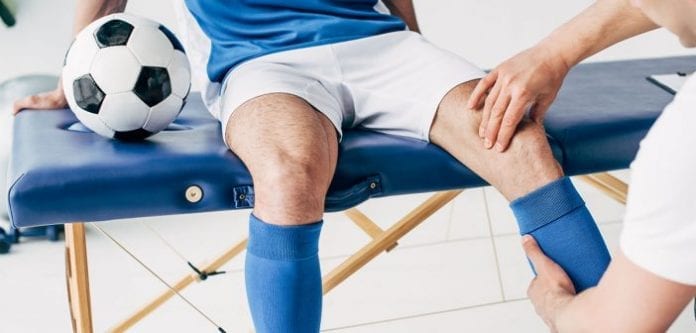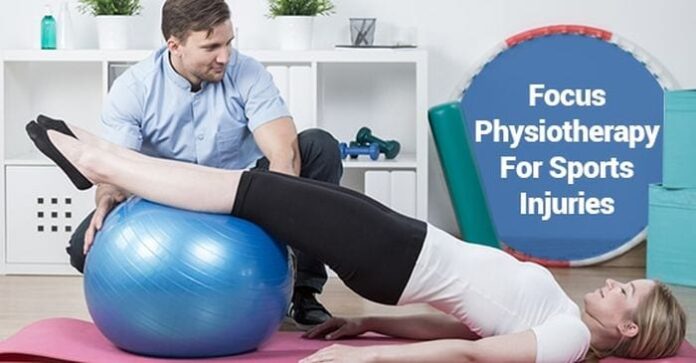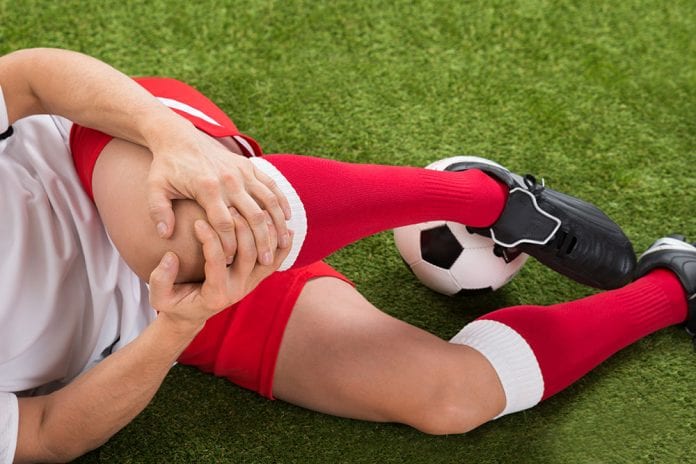A sports-related injury can happen to anyone – from professional athletes to the average person who engages in physical activity for health reasons or for fun. Usually, proper preparation before any kind of physical activity will help to avoid potential injury, but this isn’t always successful.
Anyone who participates in a sport should do warm-ups before playing, practice proper form, and wear the right equipment – they should also play safe and within the rules. That being said, surveys have shown that 66% of adolescent injuries were sports-related, and 47% of working-age adults suffered injuries due to sports or work.

The numbers show that despite anyone’s best intentions, injuries are going to happen and sometimes can’t be avoided. Sports injuries can range from mild, moderate, to severe, but in all cases they could present long-lasting problems for the sufferer. This is why it’s important to deal with the injury no matter how bad you think it is.
How Do Sports Injuries Happen?
Even though taking part in sports and exercising are great ways to keep in shape, there are risks involved. The most common reasons for injury include inappropriate training methods, excessive training, or improper use of exercise equipment. Other times, it can be due to issues in the body like structural abnormalities, muscle imbalances, or weakness that can have an effect on your spine, elbows, ankles, knees, or shoulders.
When a sports injury occurs it is usually due to traumatic force inflicted onto a joint in motion which causes hyperextension or hyperflexion. An example of this type of injury is a torn Anterior Cruciate Ligament which can happen as the result of a quick deceleration, hyperextension, or rotation of the knee joint. These kinds of injuries can be significantly painful or debilitating to the point where engaging in that physical activity or sport is no longer feasible.
Chiropractic Care for Sports Injuries

One of your options is to visit a chiropractor like the ones at Transform Chiropractic to help you deal with and prevent future sports injuries. In fact, many chiropractors are highly skilled at assessing, diagnosing, and managing sports-related injuries as part of their regular services. Continue to read more about how a Chiropractor could help.
By getting to know your medical history and performing a physical examination, they can work with you to determine the cause of pain and dysfunction, and then recommend an appropriate treatment plan. Depending on the kind of injury, the kind of chiropractic care you receive may include joint and spinal adjustments and mobilisation, soft tissue therapy, adjunct modalities, rehabilitation, exercises, and lifestyle advice to reduce pain, restore proper function, and assist in the healing process of damaged tissue.
You may be surprised to learn that chiropractic care is an on-going process that involves visitation and also at-home physical therapy that you do on your own time. Your chiropractor isn’t just going to give you adjustments to help with the pain, but they are also there to guide you and offer advice that you will use every day in order to get better.
A number of the exercises they recommend will involve stretching and strength-training in order to strengthen your muscles. Strong muscles will help stabilize your injury and also prevent future injuries. Of course the exercises they recommend will be tailored to your needs as to avoid further injury or irritation.
Physiotherapy for Sports Injuries

People who have moderate to severe long-term sports-related injuries may benefit instead from physiotherapy. A physiotherapist is someone who uses techniques such as massage, manipulation, and exercises to improve range of motion, strengthen the surrounding muscles, and return normal function to the injured area.
They also typically will create an exercise regimen for you to follow in order to help strengthen the affected body part and help reduce the risk of the injury occurring again.
Using PRICE Therapy
For minor injuries you can treat yourself at home like mild strains and sprains, you can use PRICE therapy for up to two to three days.
PRICE stands for:
- Protection: Do what you can to protect the affected area from further injury by using something like a support.
- Rest: Refrain from exercising and cut back on your daily physical activities. You can further help to rest the injury by using crutches or a walking stick to avoid putting weight on things like your ankle or knee. Use a sling if you have an injured shoulder.
- Ice: Apply ice to the affected area for 15 to 20 minutes every two to three hours after you’ve sustained the injury. If you don’t have an ice pack you can use a bag of frozen peas or similar. Be sure to wrap it in a towel first so that it doesn’t directly touch your skin and cause ice burn.
- Compression: Use an elastic compression bandage during the day to prevent swelling.
- Elevation: Keep the injured body part raised above the level of your heart whenever you can in order to reduce swelling.
Managing Your Mental Health

When dealing with pain, it’s easy to overlook the state of your mental health. The truth is that the stress of an injury requires both physical and psychological resilience. People suffering from a sports injury often also need help recovering mentally and emotionally.
There’s a wide range of emotions that someone may feel when they receive an injury from physical activity. This may include anger, depression, sadness, or even denial. People often feel like their injury is unfair considering they have been doing things in an effort to stay healthy and physically active.
People suffering with these kinds of emotions need to learn how to cope and manage their negative feelings. A positive attitude and acceptance often helps people recover faster and helps make their journey to recover easier.
Don’t Do it Alone
There are a number of resources out there available to you when it comes to dealing with a sports injury. If you’re not sure how to proceed with your recovery, then it’s important to turn to a professional for advice – otherwise you might just end up injuring yourself even more.









